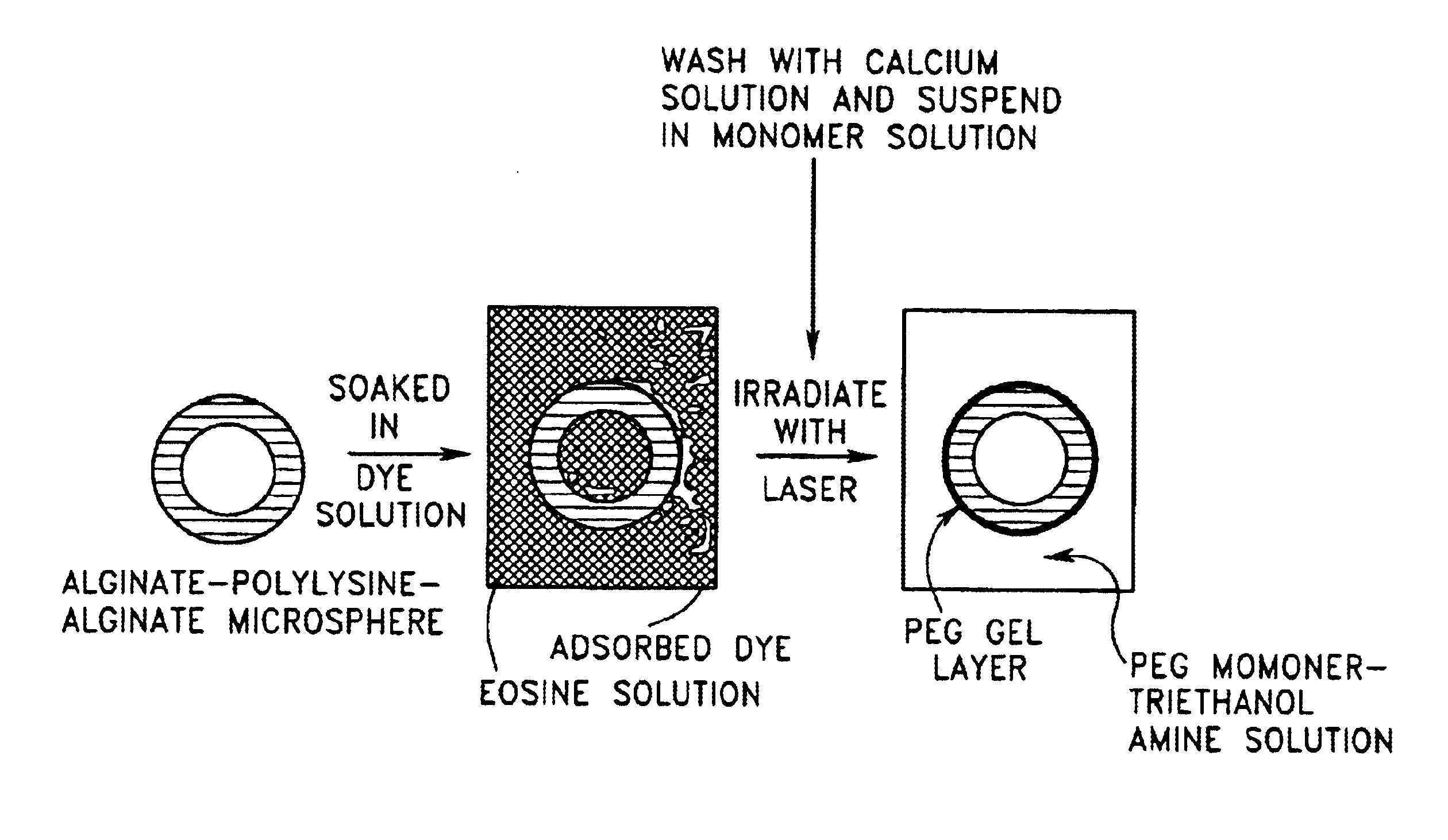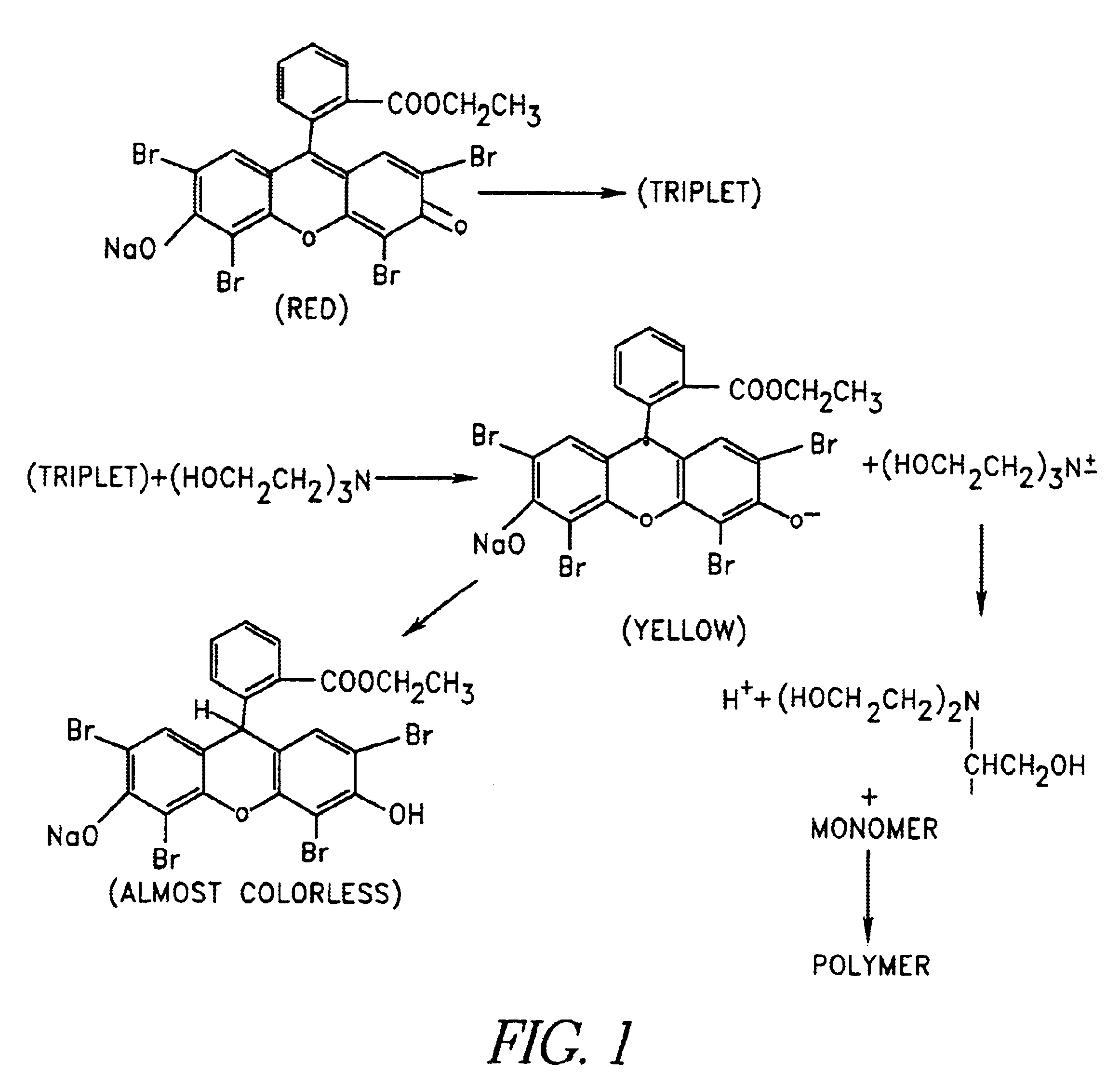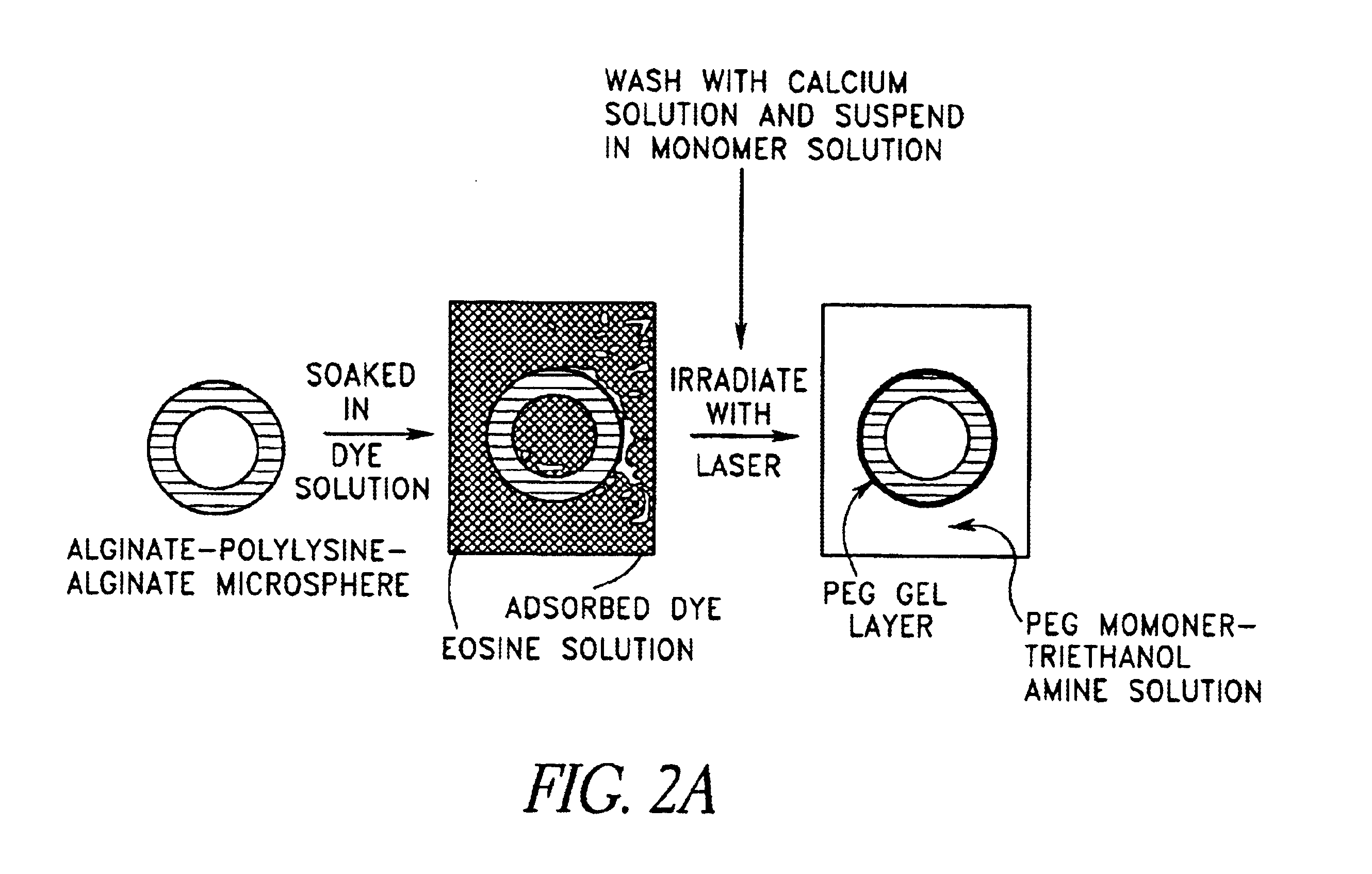Gels for encapsulation of biological materials
a biological material and gel technology, applied in the direction of cell encapsulation, granular delivery, immobilised enzymes, etc., can solve the problems of cell death or functional impairment, cell loss, cell exposure to processing conditions,
- Summary
- Abstract
- Description
- Claims
- Application Information
AI Technical Summary
Benefits of technology
Problems solved by technology
Method used
Image
Examples
example 1
Synthesis of PRO 6 KD Diacrylate
[0133]PEG acrylates of molecular weights 400 Da and 1,000 Da ware commercially available from Sartomer and Dajac Inc., respectively. PEG 6 kD (20 g) was dissolved in 200 mL dichloromethane in a 250 mL round bottom flask. The flask was cooled to 0° C. and 1.44 mL of triethyl amino and 1.3 mL of acryloyl chloride were added with constant stirring under a dry nitrogen atmosphere. The reaction mixture was then brought to room temperature and stirred for 12 hr under a nitrogen atmosphere. It was then filtered, and the filtrate was precipitated by adding to a large excess of hexane. The crude monomer was purified by dissolving in dichloromethane and precipitating in hexane. Yield 69%.
example 2
Synthesis of PEG 18.4 KD Tetraacrylate
[0134]A tetrafunctional water soluble PEG (30 g; m.w. 18.5 kD) having the following structure was purchased from Polysciences, Inc.:
where F=CONH, COO or NHCOO[0135]X=H, CH3, C2H5, C6H5, Cl, Br, OH or CH2COOH[0136]F2=COO, CONH, O or C6H4, and[0137]R=CH2 or -alkyl-.
[0138]The PEG was dried by dissolving in benzene and distilling off the water-benzene azeotrope. PEG 18.5 kD (59 g) was dissolved in 300 mL of benzene in a 500 mL flask. To this, 3.6 mL of triethylamine and 2.2 mL of acryloyl chloride were added under nitrogen atmosphere and the reaction mixture was refluxed for 2 hours. It was then cooled and stirred overnight. The triethyl amine hydrochloride was separated by filtration and the copolymer was recovered from filtrate by precipitating in a largo excess of hexane. The polymer was further purified by dissolving in methylene chloride and reprecipitating in hexane. The polymer was dried at 50 degrees C under vacuum for 1 day. Yield 68%.
example 3
Coating of Islet-containing Alginate-PLL Microspheres by Surface Dye Adsorption
[0139]The microcapsule interfacial polymerization method was used to form membrane around alginate-PLL microcapsules containing islets. Alginate-PLL coacervated microspheres, containing one or two human pancreatic islets each, were suspended in a 1.1% CaCl2 solution and aspirated free of excess solution to obtain a dense plug of microspheres. A solution of ethyl eosin (0.04% w / v) was prepared in a 1.1% CaCl2 solution. This solution was filter-sterilized by passage through a 0.45 μm filter. The plug of microspheres was suspended in 10 mL of the eosin solution for 2 min to allow uptake of the dye. The microspheres were then washed four times with fresh 1.1% CaCl2 to remove excess dye. A solution of PEG 18.5 tetraacrylate (2 mL; 23% w / v) containing 100 μL of a 3.5% w / v solution of triethanolamine in HEPES buffered saline was added to 0.5 mL of those microspheres. The microspheres were exposed to argon ion la...
PUM
| Property | Measurement | Unit |
|---|---|---|
| Nanoscale particle size | aaaaa | aaaaa |
| Nanoscale particle size | aaaaa | aaaaa |
| Fraction | aaaaa | aaaaa |
Abstract
Description
Claims
Application Information
 Login to View More
Login to View More - R&D
- Intellectual Property
- Life Sciences
- Materials
- Tech Scout
- Unparalleled Data Quality
- Higher Quality Content
- 60% Fewer Hallucinations
Browse by: Latest US Patents, China's latest patents, Technical Efficacy Thesaurus, Application Domain, Technology Topic, Popular Technical Reports.
© 2025 PatSnap. All rights reserved.Legal|Privacy policy|Modern Slavery Act Transparency Statement|Sitemap|About US| Contact US: help@patsnap.com



